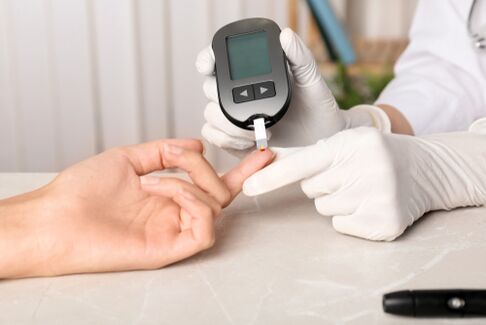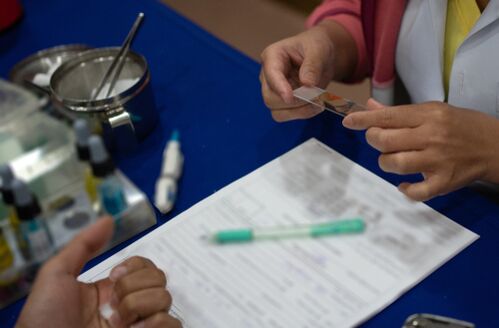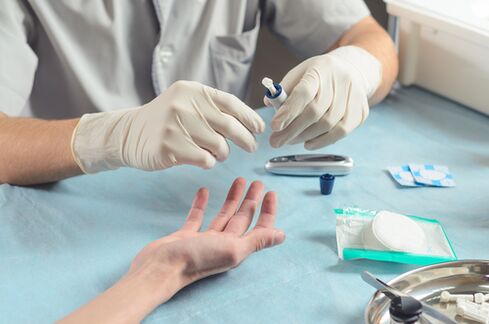
Diabetes Mellitus is a chronic endocrine disease, characterized by the lack of glucose and nutrition, feeding, breath and energy exchange containing glucose and cells. In this case, production or interaction with the hormone of the pancreas - insulin is impaired. In the bloodstream, it is necessary to adjust the existence of glucose quantity. A pair of glucose-is a glucose-resistant increase with a pair of glullies of hyperglisemia. The work of metabolism, kidneys, heart, blood vessels and central nervous systems is violated.
The two main types of diabetes are different, which is the differences in the absence of a group of endocrine diseases.
For any reason, the immune system is characterized by Pancreatic beta cells (more than 80%), insulin production. There is no hormone, but glucose is constantly delivered to the body. Blood sugar turns off on a scale. The diabetes of the first type was found in the most childhood or adolescents. But it's not uncommon for adults.
Type II diabetes, more diagnosed in people after 30-40 years. But the disease is rejuvenated. More than 90% of patients are monitored. The body can still produce insulin, but the insulin sensitivity of cells decreases (this is called insulin resistance). Arises a wild circle. The cells do not feel insulin, produce even more insulin to feed the body; cage. Glucose is just collected in blood and increases insulin appetite. Human eats, jumps sugar, and insulin resistance is strengthening.
Here the glucose level goes beyond reference values, but you can't talk about diabetes. PrediBet, type II diabetes can be the basis for the development of diabetes, as well as the development of the diseases of the cardiovascular system.
Gestational diabetes are characteristic during pregnancy. Most II or III are in the trimester.
In addition, the course of the disease differs in violence: light (i), average (ii) and heavy (iii).
If you do not have the habit of donating blood for glucose once a year and you once do not know the endocrinologist from the clinic, there are a number of symptoms that can say that it is time to contact a specialist. However, we will reserved immediately, if insulin's shortage has already passed to a critical point, diabetes are displayed. Therefore, the most effective way to find your sugar level at this time is to donate blood.

Symptoms of the first type of diabetes:
- permanent, insatiable thirst;
- Dry mouth;
- frequently urine;
- neglect and fatigue;
- insatiable hunger;
- weight loss (on average 3-5 kg), not related to any movement of a person;
- Sight problems (uncertainty in the picture is as if everything is in the fog).
The symptoms of the second type of diabetes are similar to the type of iabetics in some parameters: thirst, hunger, dry mouth, fatigue, fatigue, vision problems and frequent toilets are called to the restroom. But this type has its own signs:
- Numbness and tingling in arm and legs;
- Slow wound healing and recurrent infections.

Unfortunately, scientists cannot call people the exact cause of diabetes (especially the first type). Poor ecology, abundance of viral infections and insufficient operation of the immune system is taken as a basis. Among the reasons for the development of diabetes Mellitus is generally different:
- Hereditary tendency. Moreover, if the father is a diabetics patient of the first type, his mother reaches 10% if it is 2, 5%. If both parents are diagnosed with type diabetes, in 40 years, the child's risk of this disease increased by 65-70%;
- unbalanced diet with abundance;
- Weight (90% of people with Type II type II);
- lack of physical activity;
- a basis that is ongoing;
- PrediBet;
- Long-term use of certain medications (diuretic, hormonal, salicylate, citostatics, etc. );
- Ethnicity (in the European race children, the risk of developing the 1st type diabetes, higher than the 1st type);
- History of gestational diabetes;
- Chronic deficiency of the adrenal cortex.
This disease can occur in diabetes (chronic and sharp), which threatens the work of the whole body, if you are insidious and do not follow the doctor's instructions. Chronic complications are observed while high sugar levels last a long time.

The following chronic complications may differ:
- The fragility of the blood vessels in the retina (retinopathy) reduces visual acute, reduce the early development of cataracts or condemnation of the early development of cataracts.
- With diabetes, periodontitis often occurs, causes dental losses or heart problems. In addition, various infectious diseases of the oral cavity are possible. It is necessary to observe the well of hygiene and regularly visit the dentist.
- Cardiovascular diseases are the most common reasons for disability and death among diabetics. Angina Pector, myocardial infarction, stroke, etc. The lack of observation of cholesterol and glucose levels, increasing blood pressure contributes to the development of these complications.
- The destruction of blood vessels in nephroatism or kidney causes kidney activities or refusal. The control of hell is required.
- Neuropathy (nervous damage). The risk of neuropathy is exposed to feet. The walls of ships and nerve fibers are destroyed, and the blood flow of the legs deteriorates. The development of neuropathy is the loss of tingling, pain, reptile goosebumps or sensitivity. Patients, especially the elderly, in general, do not add this meaning full of ulcers, infectious diseases and amputation. The neuropathy can affect other body systems (erectile dysfunction, gastrointestinal tract problems, genitourinary system).
- Diabetes is one of the reasons for atherosclerosis, because the ships become fragile, become fragile and increases the risk of thrombus.
- Diabetes often have joint pain due to the reduction in the quantity of synovial fluid.
- There is also a high frequency of mental disorders.
Acute complications that develop rapidly are usually associated with fluctuations in blood glucose. Low (hypoglycemia) and high (hyperglishemia) cause crisis. The crisis of hypoglycemia (9 mmol / l or lower) and hyperglycemic crises are dangerous to the formation of diabetic ketoacidosis and hyperosmolyar hyperglismic. These are urgent and threat conditions, convulsions, coma and fatal results.
Diabetes diagnosis is an important step. In an ideal situation, a person should be aware of his glucose level, especially after 45 years. However, if it is at risk, then the analysis should be more carried out and do so in advance to avoid evaluating valuables.

Diabetes are diagnosed in several ways:
- Analysis for glycated hemoglobin. The results of the analysis demonstrate the average level of glucose in the blood for the last 2-3 months. So you can watch the dynamics;
- Analyze glucose (capillary or venous) in a blood plasma in an empty stomach. The audit demonstrates glucose position at the moment;
- Gluczotolerant test is defined in suspicious cases. The test continues for a long time and contains the measurement of glucose level before and after a glass of water with glucose;
- Urinary analysis to have glucose and / or acetone. A healthy person is not characterized by the presence of these elements in urine.

TYPE i Diabetes is a basic treatment for insulin, which should be managed in a dose, which is a dose of treatment for insulin, is a dose and a dose that is assigned to insulin. Using special insulin syringes, syringe-alive or insulin pumps, you can independently calculate the doses of the given hormone. In certain conditions, it is possible to set medications for diabetes that stimulate their body to develop their insulins.
In the diabetes of the first types, the first type of day, the transitions lead to death, along with diabetic ketoacidosis. Daily insulin + Proper Nutrition + Physical Activities can provide life without complicating.
With II Type diabetes, a doctor prescribes drug treatment designed to reduce sugar levels and normalize a person's condition. Sometimes it may be necessary for substitute therapy with insulin, but there is no need to adopt daily. The diet in diabetes is observed in any way, but also increased physical activity, body weight control.
The exam with the participation of diabetes before diabetes should be carried out once every six months or a year. You can now have to get rid of weight and move on dietary nutrition.
With gestational diabetes, you need to carefully track glucose levels in the blood and watch the recommendations of the observer. After the most bodies, blood sugar returns to normal. But the second type of diabetes has the risk of development.
Diabetes Mellitus has been a serious endocrine disease for 5-10 years, and men die more than women. Infectious and viral diseases are more seriously. Against the background of pneumonia, complications occur 6 times more compared to the statistics of people without diabetes on a date. In healthy people, other forms of Alzheimer's and other dementia compared to diabetic patients are less developed.

But you can fight diabetes and fight. Authorized management helps them prevent many problems and complications. Thus, 50-60% of the cases of illness have stabilized and moved forward.
Proper control and prevention of diabetes:
- regular glucose check;
- a special diet for diabetes;
- Play sports in moderate mode;
- the observation of blood pressure and cholesterol;
- Regular visit to the necessary experts and polls;
- Taking medication designated by the doctor.
Diabetes is not fully studied, but a conscious attitude to their lives with medicines and these diseases will help you live without a long time and corruption.
























